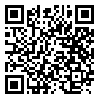Volume 9, Issue 1 (11-2015)
2015, 9(1): 4-4 |
Back to browse issues page
Download citation:
BibTeX | RIS | EndNote | Medlars | ProCite | Reference Manager | RefWorks
Send citation to:



BibTeX | RIS | EndNote | Medlars | ProCite | Reference Manager | RefWorks
Send citation to:
alizadeh T, amiri S, taher neshat dost H, talebi H. Comparison the effectiveness of Kohlberg’s dilemmas, real life dilemmas and positive emotion induction methods on emotion expectancies. Research in psychological health 2015; 9 (1) :4-4
URL: http://rph.khu.ac.ir/article-1-2387-en.html
URL: http://rph.khu.ac.ir/article-1-2387-en.html
1- , toran.alizadeh@yahoo.com
Abstract: (9712 Views)
The aim of this research was to study the effectiveness of training Kohlberg’s dilemmas procedures, real life dilemmas, and positive emotion induction on emotion expectancies in female adolescences. The statistical population includes all grade female students in Yasuj high school during 2013-2014. This was a pre-test, post- test and follow up queasy-experimental study with control group. The study sample consisted of 120 female students who were selected via multi – step cluster sampling method and, randomly, assigned to Four groups. The experimental groups were separately, taught Kohlberg’s dilemmas, real life dilemmas during 8 sessions of 70 minutes. One of the group was induced by positive emotion method. The control group was left untreated.
The participants confronted with a set of emotion expectancies scenarios (Malti and Killer, 2011) as the pre-test, post- test and follow up. The datas were analyzed by repeated measure method and by ANCOVA tests. The findings showed that Kohlberg’s dilemmas, real life dilemmas, and positive emotion induction methods were effective on emotion expectancies (p<0/001). The follow up L.S.D test showed that: although all intervention methods were effective on emotion expectances in post- test and follow up phases, real life dilemmas can improve the emotion expectancies more than other three methods in post- test and follow up phases. The next highest effectiveness rates (the highest mean differences compared with those of control group) belong to training Kohlberg’s dilemmas, and positive emotion induction, respectively.
The participants confronted with a set of emotion expectancies scenarios (Malti and Killer, 2011) as the pre-test, post- test and follow up. The datas were analyzed by repeated measure method and by ANCOVA tests. The findings showed that Kohlberg’s dilemmas, real life dilemmas, and positive emotion induction methods were effective on emotion expectancies (p<0/001). The follow up L.S.D test showed that: although all intervention methods were effective on emotion expectances in post- test and follow up phases, real life dilemmas can improve the emotion expectancies more than other three methods in post- test and follow up phases. The next highest effectiveness rates (the highest mean differences compared with those of control group) belong to training Kohlberg’s dilemmas, and positive emotion induction, respectively.
Keywords: Kohlberg’s dilemmas, real life dilemmas, positive emotion induction and emotion expectancies
Type of Study: Research |
Published: 2015/11/15
Published: 2015/11/15
Send email to the article author
| Rights and permissions | |
 | This work is licensed under a Creative Commons Attribution-NonCommercial 4.0 International License. |





